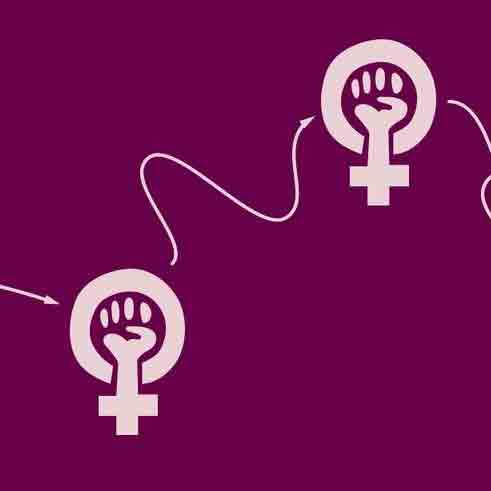The 'right' way to use the word heteroflexible depends on you, and only you.
But wait, isn’t heteroflexibility just the same thing as bisexuality or bicuriosity?
Some people do use the words heteroflexible, bisexual, and bicurious interchangibly to describe their sexual orientation. People who are generally questioning their sexuality might use any combination of these words to describe where they are in their journey to finding the labels that best suit their identity. If you are a heteroflexible person who’s struggling to find the right words to describe your sexual orientation, know that you’re not alone. The “right” way to use the word heteroflexible depends on you, and only you. You deserve to take up space, and your sexual orientation is valid. Some people still subscribe to wildly outdated beliefs about sexual orientation. For example, people still think that bisexuality is a signpost on the way to becoming gay or lesbian or a phase for people to “experiment” before returning to the safety of heterosexual partners. Sexual orientation isn’t always about finding a linear path to one single label, and there’s no need to shame people for experimenting sexually! Instead of thinking of sexuality as a linear road with a final destination, it might help to think of any kind of sexual orientation as a garden. You can plant any fruit, vegetable, tree or plant life at any time, and they’ll bloom and decay at different rates — just like sexual attractions, crushes, infatuations, relationships, emotional affairs and more. The many lessons from sexual experimentation with people of the same or different genders all become rich compost that help new attractions grow in fertile soil.Heteroflexibility teaches us about different kinds of attraction.
Heteroflexibility reminds us that attraction isn’t always about sex. It also reminds us that we can learn from other sexual orientations. Like demisexual people, for example, some people need to feel a strong emotional connection before feeling sexual attraction toward another person. Heteroflexible people might find that they’re sexually attracted to hetero partners, while feeling emotionally attracted to people of the same gender. While sexual attraction isn’t the first or foremost feeling for another person, heteroflexible people may develop deeper sexual urges after getting to know someone emotionally. Taking a page from the sapiosexual playbook, heteroflexible people might find themselves intellectually attracted to gender-diverse people or people of the same gender. That intellectual attraction may not translate into steamy sexual moments, but can still lead to feelings of euphoria, intimacy, and infatuation. Honoring heteroflexibility teaches us about the many forms and levels of attraction.You deserve to take up space, and your sexual orientation is valid.
How do I take up space as a heteroflexible person?
Since the term entered the zeitgeist circa 2001, heteroflexible people have struggled with taking up space to explore and express their sexual orientation. Here are some tips for navigating heteroflexible visibility in the LGBTQ+ community:- Recognize that you have straight-passing privilege. If you and your primary partner look like a regular heterosexual couple, you are probably less likely to experience violence rooted in homophobia and transphobia. Use this privilege to amplify the voices of people whose sexuality and gender presentations are still heavily stigmatized.
- Be honest about where you are in your process. Many queer folx have expressed disappointment, frustration, anger — sometimes even hostility and violence — when a heteroflexible partner chooses to return to a straight-passing relationship. You are not responsible for their feelings. However, you are responsible for being transparent about where you are in your process so that the other person can create realistic expectations.
- Don’t feel bad if you don’t have the right words to describe exactly how you feel. Many people in the queer community, no matter how confident they seem about their sexual orientation, are still figuring it out! This new language should be used to help us navigate our feelings. Using the word “heteroflexible” should not feel punishing or heavy. If it feels that way, you might need to surround yourself with people who will accept you for exactly where you are in your process — and even help you find the language that best suits your sexual orientation at this very moment.
- Experiment with partners who make you feel safe. You don’t have to prove anything to anybody. People who make ultimatums such as “If you don’t like sucking dick, you’re not really gay” are probably not the safest people to share your body and presence with. Your differences in beliefs about sexuality may result in harmful experiences for both of you. Try to find partners who will say things like, “I know you’ve never been with a girl before. I can teach you how to go down on me, if you’re interested in doing that,” or “Am I going too fast? We can slow down and cuddle, if that feels good for you.” You deserve to have your boundaries and needs met, no matter what your sexual orientation is.




























